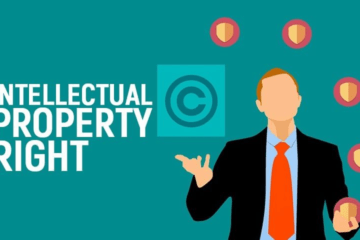
This article is written by Karan Gautam of 4th Semester of Delhi Metropolitan Education
Abstract
For a specific amount of time, a patent is an exclusive right to bar others from creating, using, or selling an invention. Getting a patent is the first step an investor should take to stop someone else from stealing their innovation.
Innovation is the creation of a new or novel product, process, composition, or device. Any new, intangible innovation that has the potential for useful modern applications is given a patent by the government.
An innovation that is patentable in India is, to put it simply, an exclusive right granted by the government to the innovator for a set amount of time. Without the inventor’s consent, no one else is allowed to make, indulge in, create, use, sell, or import the innovation.
Keywords: Patent, Intangible Innovation, Modern Application, Innovator.
Introduction
Only 309 of the 962 patent applications that were published in India in 2019—of which 71 were early publishing and 891 were ordinary publications—have been approved this week. The other applications have all been refused.
According to Section 2 (j) of the Patent Act (of India), [1]everything that is innovative, capable of industrial use, and is not frivolous (subject matters eligible for patentability) falls within the category of “Inventions” and can be patented. To the contrary, as stated in Sections 3 and 4 of the Act, those that cannot meet these requirements (or limit the range of subject topics eligible for patentability) are not patentable.
How Do Inventions Work?
The term “invention” is defined in Section 2(j) as “a new thing or method involving an inventive step and capable of use.” Since it hasn’t been utilized or published anywhere in the globe, the invention should be completely original.
The Indian Patent Act’s Sections 3 and 4
Debatable sections of the Patent Act, Sections 3[2] and 4[3], deal with a list of exclusions that are not patentable and do not meet the aforementioned requirements. The following are not “inventions” in the sense of this law:
(a) Inventions that are pointless and go against the rules of nature.
Inventions that are unnecessary or go against existing natural principles.
Examples include any machine that operates at 100% efficiency or produces output without requiring an input.
b) Innovations that violate public morality
Inventions whose primary or intended use, or commercial exploitation of them, might violate public morals or order (i.e., go against socially accepted norms and be illegal), or which have a serious negative impact on human, animal, plant, or environmental health.
Example: In biotechnology, stopping the growth of a seed by introducing a gene sequence that might cause butterflies to vanish, any invention that encourages theft or currency note forgery, or bioterrorism.
(c) Creations that are merely discoveries of things found in nature.
The simple articulation of an abstract idea, the finding of any naturally existent living or non-living substances, or the discovery of a scientific concept.
Explanation: Since the finding of something that already exists in nature without restriction counts as a discovery rather than an invention, it cannot be protected by a patent unless it is used in the production of a product or substance.
Landmark Cases of Non-patentable Inventions
- In Bilski V. Kappos[4]
The case of Bilski v. Kappos concerns the patentability of a business technique. In this instance, Bilski and Warsaw sought a patent on hedging risks in commodity trading, but the US Supreme Court denied their request because an abstract idea cannot be protected by a patent.
Case Laws
- In the court case Glochem Industries Ltd. v. Cadila Healthcare Ltd.[5]
The Bombay High Court ruled that all fields, including pharmacology, are covered by Section 3(d). A further finding made by the court was that “the standard to evaluate whether the discovery is an invention or not? It is the responsibility of the patent applicant to demonstrate that the discovery has improved the original substance’s known therapeutic efficacy, and if the discovery is simply a derivative of an existing substance, it must be demonstrated that the properties of the derivatives have materially different efficacy. Therefore, according to this subsection, the mere finding of a novel form of a substance that does not increase the substance’s existing efficacy will not be considered to constitute an innovation.
- Ten Xc Wireless Inc & Anr vs. Mobi Antenna Technologies[6]
According to the Delhi High Court, “a method of substituting split-sector antennae for conventional antennae; a split-sector asymmetric antenna for substituting conventional antennae – are all merely uses for the asymmetric antenna already known. As a result, the claimed subject matter does not qualify as an innovation under Section 3(d).
(d) Merely mixing mixtures to produce an aggregate of attributes is not patentable.
A material produced by merely mixing two or more mixtures, which only aggregates the properties of the mixture’s constituent mixtures, is not considered an invention.
Explanation: Mere mixture addition is not patentable unless it has a synergistic impact, which is when two or more substances or agents interact to produce a combined effect that is larger than the combined effects of each one.
(e) A simple collection or duplication of existing technologies is not an invention.
the simple collection, arrangement, or duplicate of already existing, independently operating, and known-functioning devices.
Explanation: Improvements that merely extend existing functionality or blends of previously known concepts are not patentable unless they lead to the creation of novel products.
(f) A farming or horticulture method cannot be patented.
A technique utilized in horticulture or agriculture.
Explanation: Growing techniques for plants, such as growing algae and mushrooms, or improving soil, are not inventions and cannot be patented.
(g) Medicinal, curative, preventative, diagnostic, or treatments for illnesses in humans and animals are not patentable.
Any procedure for the medical, surgical, curative, preventative, diagnostic, therapeutic, or other treatment of people, as well as any procedure for the comparable treatment of animals, to rid them of disease or to raise their market value or the value of their products.
Explanation: The administration of medications intravenously or orally, the use of stitch-free surgery, the treatment of plaques, and other curative procedures do not fit within the purview of innovation and are not patentable.
Ø In Mayo Collaborative Services V. Prometheus Laboratories, Inc20.[7]
The US Supreme Court ruled that in this case, “diagnostic and therapeutic methods (which includes the treatment or cure of diseases) is not patentable as it claims a law of nature”) were not patented.
(h) Animal and plant reproduction and growth depend on fundamental biological processes, which are not inventions.
Seeds, species, and other parts of plants and animals, as well as all biological processes used in the production or division of plants and animals, aside from microorganisms.
(i) Basic computer, business, or mathematical programs are not inventions.
A business strategy, algorithm, or computer program in and of itself;
Explanation: Because business processes and algorithms are similar to the rule of nature, they cannot be trademarked. This includes mathematical calculations, scientific truths, and acts of mental talent.
(j) The production of beauty is not an invention.
any artistic effort, whether it be a literary, theatrical, musical, or artistic work, including films and television shows.
Explanation: Activities associated with creativity, such as writing, painting, sculpting, choreographing, and cinematography, cannot be patented and are covered by the Copyright Act of 1957.
(k) Mental activity, rules, or procedures are not inventions.
A simple game-playing strategy, guideline, or way to carry out a mental act.
Explanation: Playing games like chess, sudoku, and other similar ones are not regarded as innovations, but rather as simple brain exercises, and are therefore not patentable.
AI-based inventions and the Indian Patent System.
To patent AI technology in India, one must adhere to the computer-related Inventions (CRIs) rules, which prohibit the patenting of computer programs or algorithms (under section 3(k) of the Indian Patent Act). These rules are now utilized to evaluate AI-based ideas as well as inventions based on computers, algorithms, or software.
The following are required to claim patenting AI-based inventions:
- Indicate how the invention’s working mechanism or approach uses AI; and
- Don’t concentrate solely on the AI programming codes or algorithms.
It should be emphasized that although the term “Artificial Intelligence” appears in the claims of patents that have been issued, it refers to a component of a system that uses data or commands from an AI system. The AI’s guiding philosophy is not, however, highlighted.
What are the advantages of the new Patent Law development?
The Indian Patent Office received a total of 19,796 patent registration applications up till April 2022, of which 10,706 were submitted by applicants from within India. The Intellectual Property Office and DPIIT’s efforts to raise awareness of the advantages of IP registration are acknowledged for this growth by the Union Ministry of Commerce and Industry, Consumer Affairs, Public Distribution, and Textiles.
Not only are the citizens affected, but the working methods of the patent officials are also changed. During the same time frame, the patent application’s pending status has also decreased. Previously, the duration of the patent examination process was around 72 months, but it is now only 5-23 months.
The IP office granted 30,074 patents in the fiscal year 2021–2022, up from 5978 in the fiscal year 2014–15.
India’s position in the Global Innovation Index has also increased, moving up from 66th place in 2020 to 46th place in 2021.
Conclusion
India is a nation that has realized the significance of robust patent systems for the development of industry and commerce to bring it up to par with the modern world. There has been an increase in patent filing since the Indian Patent Act was passed. The definition of innovation is determined by Sections 3 and 4 of this Act, which list inventions that cannot be patented. Patents are only issued for brand-new, practical inventions. Protecting their intellectual property is very interesting to innovators and inventors.
References
- IndiaFilings. Accessed July 5, 2023. https://www.indiafilings.com/learn/inventions-not-patentable-in-india/.
- ipleaders. Accessed July 5, 2023. https://blog.ipleaders.in/non-patentable-inventions/.
- LL.B Mania. Accessed July 5, 2023. https://llbmania.com/2023/06/21/non-patentable-inventions-under-the-patents-act-1970/.
- Vakilsearch. Accessed July 5, 2023. https://vakilsearch.com/blog/what-cannot-be-patented-in-india/.
[1] https://indiankanoon.org/doc/65643/
[2]https://indiankanoon.org/doc/874310/#:~:text=(i)%20any%20process%20for%20the,or%20that%20of%20their%20products.
[3] https://indiankanoon.org/doc/891560/
[4] https://www.bitlaw.com/source/cases/patent/Bilski-v-Kappos.html
[5] https://indiankanoon.org/doc/499132/
[6] https://indiankanoon.org/doc/198575838/
[7] https://supreme.justia.com/cases/federal/us/566/66/




0 Comments